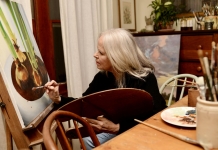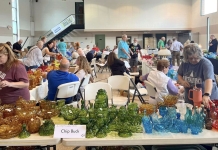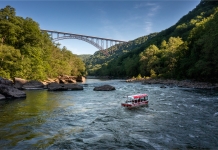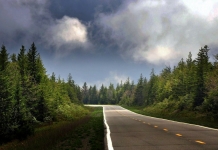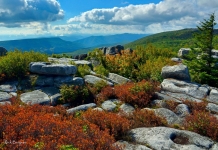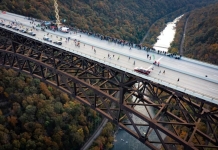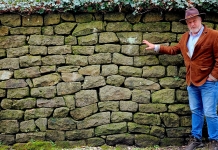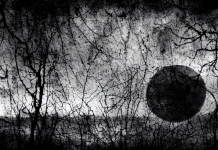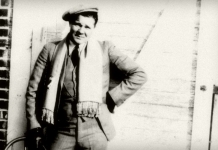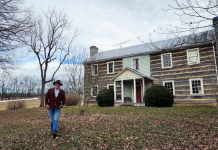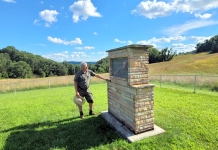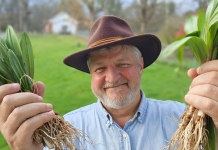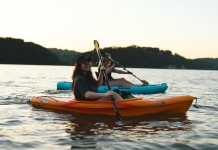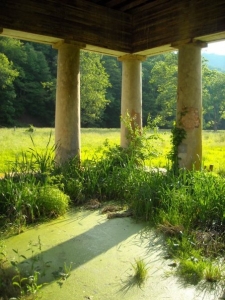
By David Sibray
WVExplorer Editor
July 31, 2014
ALDERSON, W.Va. -- The son of Benjamin Henry Latrobe, the designer the U.S. Capitol, may have been the designer of the pavilion at Blue Sulphur Springs, an iconic and endangered landmark being restored in the valleys of western Greenbrier County.
The connection came to light this spring when a group of concerned citizens embarked on a rescue of the Blue Sulphur Springs Pavilion, according to Alex McLauglin, a spokesman for "Friends of the Blue."
"We know that he [Benjamin Henry Latrobe II] designed some of the structures at The Greenbrier and that he was at the Blue Sulphur Spring," McLaughlin said. "But we do not have a smoking gun yet."
Since the Civil War, the fraternal twin of the pavilion at White Sulphur Springs has stood quietly alone in a pasture, its origin a mystery to many, though that may all change, thanks to rescue and enhancement efforts.
The pavilion was raised in 1834 by George Washington Buster, who also built a hotel, cottages, and bathhouses there, around which shady promenades intertwined. The spring quickly became a summer watering hole in a circuit toured by wealthy visitors. Andrew Jackson, Martin Van Buren, and Jerome Bonaparte were among its better known guests.
But the depression that preceded the Civil War led to a decline, under which the enterprise collapsed. It briefly became a Baptist seminary, then fell into the hands of federal and rebel troops that variously commandeered it as a bivouac and hospital. Retreating Union soldiers in 1864 set fire to the buildings -- a federal practice meant to destroy the economy of the South. Only the pavilion survived.
Through the next hundred years it stood alone, visited intermittently by historians, local picnic parties, and those who still consumed its water. Despite the efforts of the owner, flooding in 1985 and 1996, and the failure of the drainage system, the pasture grew swampy, and the columns began to shift on their foundations.
In 2013, the West Virginia Preservation Alliance announced that the site had been added to its list of endangered landmarks properties. Quickly, a group of inspired volunteers, Friends of the Blue, began to institute a plan for its rescue.
The Greenbrier Historical Society and the Greenbrier County Historic Landmarks Commission backed the effort. Rebecca Fleshman Lineberry, whose family had purchased the site from the Busters, donated the spring tract, and the Mills Group, of Morgantown, W.Va., was contracted to manage restoration.
The Daywood Foundation, the Greenbrier County Commission, and the W.Va. Division of Culture & History led a host of financial donors in the outset, according to McLaughlin, though development of the site has only begun, and further financial partnerships are needed.
"The foundation is stabilized, and, most importantly, the one column that was seven inches off center has been stabilized, and we are getting additional interest from people that have money for the next phase," he said.
The emergency stabilization completed, members of Friends of the Blue are now approaching long-term stabilization, after which enhancement programs will commence. These include landscaping and the instillation of parking and an interpretative area.
For more information on the effort or to donate, visit the Blue Sulphur Springs community page on Facebook or contact the Greenbrier Historical Society at (304) 645-3398.
Author David Sibray is editor-in-chief of West Virginia Explorer.



